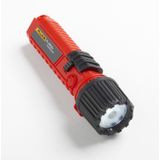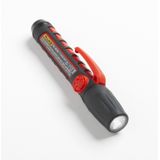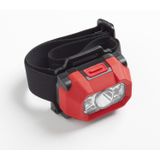Fluke Explosion proof flashlights and floodlights




In hazardous‑area environments — oil & gas platforms, petrochemical plants, confined spaces in maintenance zones — lighting isn’t just convenience, it’s safety. Fluke explosion proof flashlights and floodlights are built for those zones where a stray spark or overheating could trigger an incident. From my experience working in maintenance and inspection teams, the right lighting gear makes the difference between safe progress and work‑stop.
Fluke Intrinsically Safe Flashlights — Portable Lighting for Zone 0/1
When you’re walking a plant floor in a classified area, you’ll usually carry something from the Fluke intrinsically safe flashlights range. These models are certified for Zone 0/1, Class I Div 1/2, and often meet ATEX/IECEx and UL standards. They use rugged polymer or metal shells, sealed electronics, and runtime ratings that hold up even in harsh conditions. In practice you’ll see inspectors using them in tanks, shear rooms or hydrocarbon‑ventilation areas — you don’t get that confidence with generic handheld lights.
Hazardous Area Flashlights & ATEX Flashlights — For Explosive Atmospheres
In sites where flammable gases or dust are present, you need Fluke hazardous area flashlights or Fluke ATEX flashlights. The certification logic is real: explosion‑proof rating means that even if a cell fails, the housing stops heat or arcs from igniting the atmosphere. Maintenance contractors often mark off tasks until certified lighting is in place. With Fluke models you get lumens, beam range and runtime — but more importantly, a documented safety margin for hazardous locations.
Fluke Industrial Flashlights & Inspection Flashlights — Task‑Specific Work Lights
For everyday plant work you’ll pick up a Fluke industrial flashlight or a Fluke inspection flashlight. These aren’t always rated for Zone 0, but they are built for industrial use: impact resistance, waterproofing (often IP67 or higher), good beam spread, long battery life. You’ll see these mounted on tripods, used during shutdown inspections, or as backup in confined‑space lighting rigs.
EX‑Rated Floodlights & LED Explosion Proof Lights — Area Illumination in Hazard Zones
Where you need broad, high‑output light — say in a tank, tunnel, platform deck or maintenance bay— you’ll use a Fluke ex‑rated floodlight or Fluke LED explosion proof lights. Flood illumination is different: heavy beams, large arrays, robust drivers. In petrochemical or offshore settings you’ll see fixed or portable flood units that withstand corrosion, salt spray, vibration, and maintain required illumination levels for safety and productivity.
Fluke Rechargeable EX Flashlights, Intrinsically Safe Headlamps & Portable Work Lights EX
For hands‑free or mobile work in hazardous zones you might specify Fluke rechargeable EX flashlights, Fluke intrinsically safe headlamps, or Fluke portable work lights EX. These offer dual‑power options (battery/AC), belt or helmet mounting, and runtime long enough to cover inspection loops or vessel entry routines. When you’re in maintenance mode on night shift, these become standard in the toolbox.
Oil and Gas Safe Lighting, Petrochemical Safe Flashlights & Maintenance Lighting EX Zones
In the oil & gas and petrochemical sectors, safety standards are non‑negotiable — so you’ll often hear about Fluke oil and gas safe lighting, Fluke petrochemical safe flashlights, or Fluke maintenance lighting EX zones. When procurement teams compare quotes, the lighting spec sheet must include the zone classification, certification minimums, ambient temperature rating, mounting options and serviceability. Flashlights and floodlights become part of the safety hardware list, not just convenience tools.
Procurement & Wholesale Buying Considerations
For B2B procurement, ordering explosion‑proof lighting requires more than “lumens and beam angle”. You’ll usually check:
- Certification: ATEX/IECEx marking, Zone/Division rating, temperature class (T 3, T 4 etc.).
- Mounting & classification: handheld vs tripod vs wall‑mounted flood.
- Power options: AA/AAA cells versus rechargeable battery packs or AC/cordless hybrid.
- Environmental resistance: IP rating (IP67, IP68), shock/vibration, marine corrosion.
- Package configuration: single units, multi‑packs, spare batteries or chargers included.
- Lead times and stock: hazardous‑area gear often has longer availability; preferred distributors keep stock.
- Compatibility and field service: accessories, spares, service documentation and long‑term support matter.
In wholesale for system integrators and maintenance contractors, having a stable supply of Fluke explosion proof lights from a trusted source means downtime risks are reduced, safety compliance is maintained, and field crews stay productive.
Closing Note on Distribution
Bank of Lamps supplies the full range of Fluke explosion proof flashlights and floodlights across Europe — from our central warehouse in Latvia we serve the UK, Germany, Netherlands, Baltics, France, Spain and Belgium. For B2B clients and system integrators, we maintain stable stock, offer flexible bulk quantities and streamline logistics so your hazardous‑area lighting gear arrives on schedule.